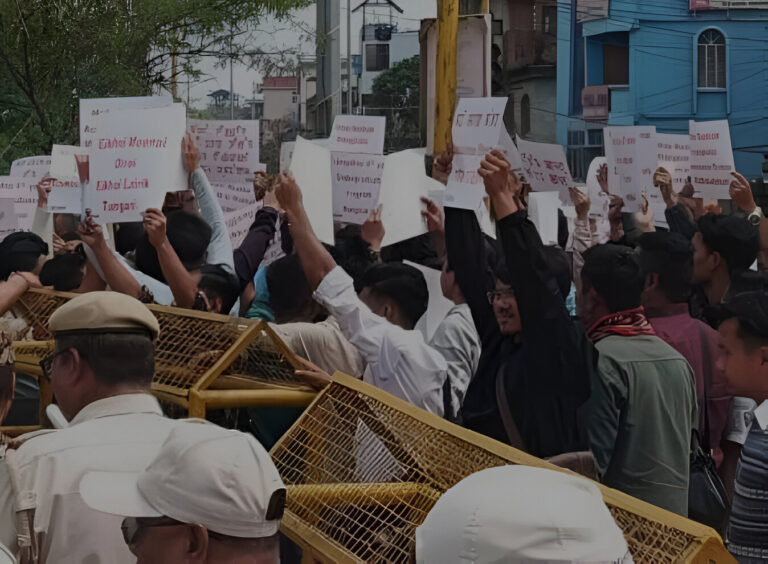Dengue Cases Spike in Churachandpur District, Manipur
Summary
The Churachandpur district of Manipur has reported a rise in dengue cases, with 108 confirmed cases this year, including nine in the past week. While no fatalities have occurred, local authorities are working to control the outbreak through fogging and awareness campaigns. Accessibility challenges have hindered efforts in Pherzawl district, but health teams continue their source reduction strategies to limit the spread of the disease.
Dengue Surge in Churachandpur: A Wake-Up Call for Manipur
Introduction
In recent times, dengue—a mosquito-borne viral infection—has become a significant health concern across India. In Churachandpur district of Manipur, the situation is no different. Over the past few months, the district has seen a worrying increase in dengue cases. Health authorities have confirmed 108 positive cases as of October 2024, with nine new cases emerging just last week. Thankfully, no deaths have been reported, but the growing numbers are a cause for concern, calling for immediate action.
This article will explore the factors behind this alarming rise in dengue cases, the response of local health authorities, and how you can protect yourself and your loved ones from this mosquito-borne menace.
Understanding Dengue: What is it and Why is it Spreading?
Dengue is a viral infection transmitted by the bite of an infected female mosquito, specifically the Aedes species. This mosquito is notorious for thriving in both urban and semi-urban areas, breeding in stagnant water. Dengue is particularly dangerous because there is no specific antiviral treatment, and in severe cases, it can lead to life-threatening complications like dengue hemorrhagic fever and dengue shock syndrome.
The reasons behind the sudden spike in Churachandpur’s dengue cases are likely multifactorial. As the Aedes mosquito prefers clean, standing water, the district’s ongoing monsoon season has undoubtedly provided ideal breeding grounds. Additionally, the lack of adequate waste disposal and drainage systems may be contributing to the mosquito population’s growth.
But what is even more concerning is the gap in healthcare resources. Inaccessible areas such as Pherzawl district have not reported any cases, not necessarily because they are dengue-free, but possibly due to communication and logistical challenges that prevent proper health monitoring and intervention.
The Local Health Response: Fogging, Source Reduction, and Awareness
When the number of dengue cases began to rise in Churachandpur, local health authorities jumped into action. The Malaria Department of Churachandpur has been at the forefront, conducting fogging in areas where cases have been confirmed. Fogging is a method used to kill adult mosquitoes, reducing the immediate risk of dengue transmission.
Additionally, health workers have been collecting blood samples from residents in affected areas to screen for the virus. While fogging is crucial, the health department understands that it’s not a long-term solution. To truly curb the spread of dengue, the focus must also be on source reduction.
Source reduction refers to eliminating the potential breeding grounds of mosquitoes—like stagnant water. The health department has initiated awareness campaigns aimed at educating the public on how they can contribute to these efforts. Simple actions, such as properly covering water storage containers, disposing of unused tires and containers, and maintaining clean surroundings, can go a long way in preventing mosquito breeding.
Aedes Mosquito: The Silent Villain Behind Dengue
The Aedes mosquito, specifically Aedes aegypti, is the primary vector for dengue. This species is easy to identify thanks to the distinctive white markings on its legs. What makes these mosquitoes especially dangerous is their preference for feeding during the day, usually early in the morning or in the late afternoon.
Unlike other mosquito species that breed in dirty water, Aedes aegypti thrives in clean water—making it difficult to combat in areas with poor sanitation but also in households that store water. The mosquito’s life cycle is quick, with eggs hatching within 48 hours of being laid. This rapid reproduction rate makes dengue outbreaks challenging to control once they begin.
Challenges in Pherzawl District: A Gap in Communication
While Churachandpur grapples with rising dengue cases, Pherzawl district remains in the dark, with no reported cases so far. However, officials have expressed concerns that this might be due to poor communication and limited accessibility rather than an actual absence of the disease. Geographical and infrastructural challenges in Pherzawl have made it difficult for health officials to properly monitor and assess the situation.
This poses a significant risk, as unreported cases in remote regions can lead to uncontrolled outbreaks. The lack of proper healthcare infrastructure in these areas highlights a pressing issue in managing not just dengue but many other diseases in rural India. Ensuring that adequate healthcare resources reach these areas is essential to preventing the unchecked spread of infectious diseases.
Why You Should Be Concerned About Dengue in Manipur
Dengue is not just a seasonal issue—it’s a growing public health concern across many parts of India, including Manipur. The increase in dengue cases in Churachandpur serves as a reminder that the disease can spread rapidly, especially in areas with poor waste management, stagnant water, and insufficient healthcare resources.
While Churachandpur’s dengue numbers might seem alarming, this is part of a broader pattern. Dengue cases across India have surged in recent years due to urbanization, climate change, and inadequate infrastructure. As more areas experience unplanned urban growth, the mosquito population is expanding, creating ideal conditions for dengue transmission.
The situation in Manipur underscores the need for a coordinated public health response. Local governments, healthcare providers, and communities need to work together to combat dengue and prevent future outbreaks.
How Can You Protect Yourself from Dengue?
Thankfully, protecting yourself from dengue doesn’t have to be complicated. There are several simple but effective steps you can take to reduce your risk of infection:
- Eliminate Standing Water
Mosquitoes breed in stagnant water. Ensure that your home and surrounding areas are free from any containers where water can collect—flower pots, buckets, old tires, etc. - Use Mosquito Nets and Repellents
Sleeping under mosquito nets and using mosquito repellents during the day can significantly lower your chances of getting bitten. - Wear Long Sleeves
Covering exposed skin, especially during the early morning and late afternoon, can protect you from mosquito bites. - Keep Doors and Windows Closed
If possible, install mesh screens on your windows and doors to prevent mosquitoes from entering your home. - Support Local Health Initiatives
Participate in community clean-up drives, attend health awareness campaigns, and support efforts to reduce mosquito breeding grounds in your neighborhood.
The Road Ahead: What Needs to Be Done
Churachandpur’s struggle with rising dengue cases is a wake-up call for the region. Local health authorities are doing their part, but more needs to be done to control the situation. Community participation is key, as individual actions can significantly impact the overall public health response.
In addition to fogging and source reduction, long-term solutions are necessary. This includes improving waste management systems, enhancing access to healthcare in remote areas like Pherzawl, and strengthening public health infrastructure to ensure quicker detection and containment of outbreaks.
Conclusion: Taking Action Today for a Healthier Tomorrow
As dengue cases continue to rise in Churachandpur, the need for immediate action is clearer than ever. By being proactive—whether through personal protection measures or by participating in community-wide efforts—we can help control the spread of this deadly disease. Dengue may be a formidable opponent, but with the right strategies, it is one we can overcome.
FAQs
- What is causing the rise in dengue cases in Churachandpur?
The monsoon season and poor waste management have created ideal conditions for mosquito breeding, leading to a spike in cases. - How is dengue transmitted?
Dengue is transmitted through the bite of an infected female Aedes mosquito. - What steps are being taken to control dengue in Churachandpur?
The local health authorities are conducting fogging, collecting blood samples, and raising awareness about source reduction. - Why are there no reported cases in Pherzawl?
This may be due to logistical challenges and communication barriers rather than the actual absence of the disease. - How can I protect myself from dengue?
Eliminate standing water, use mosquito repellents, wear long sleeves, and ensure your living space is mosquito-proof.


